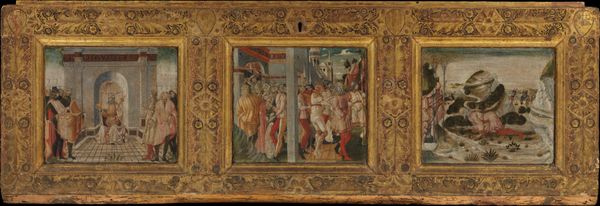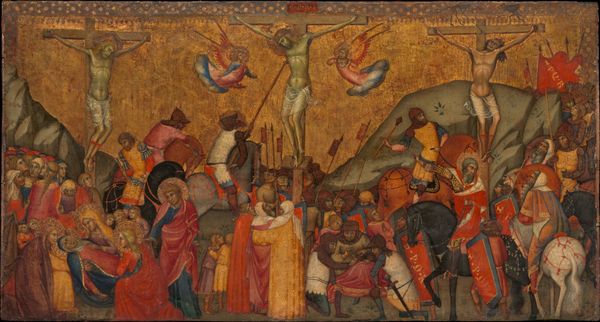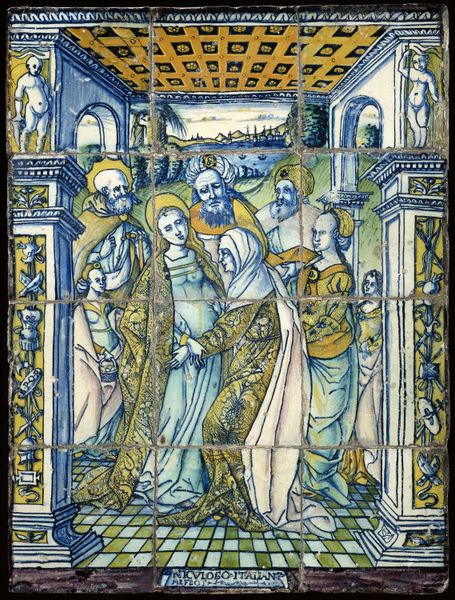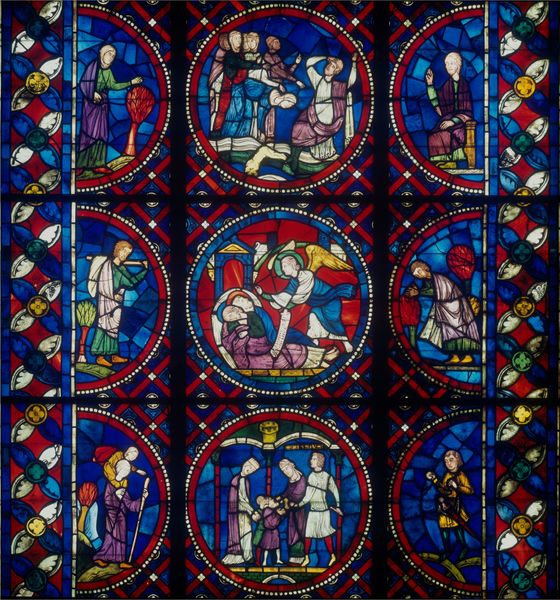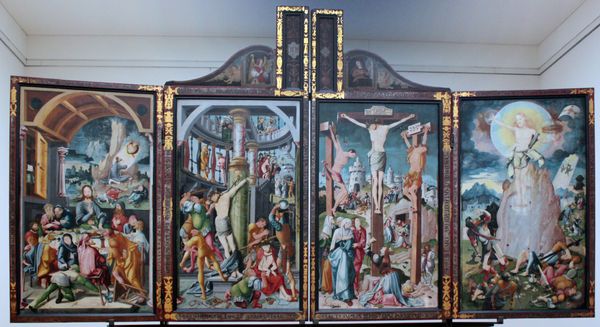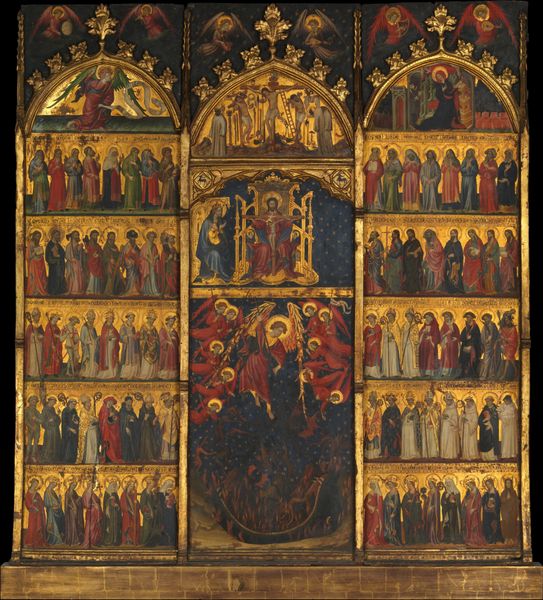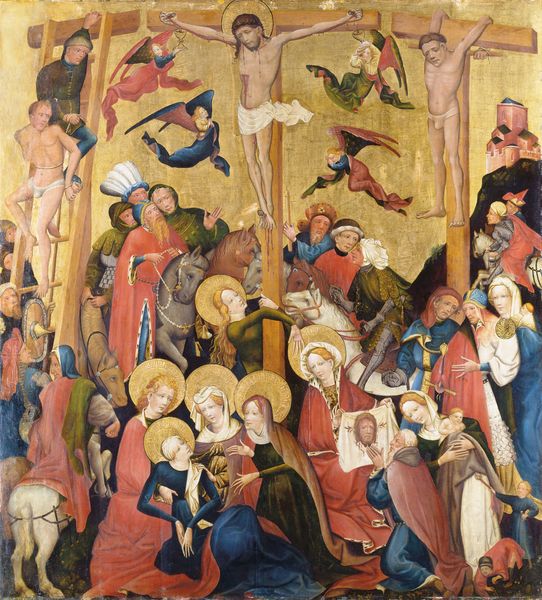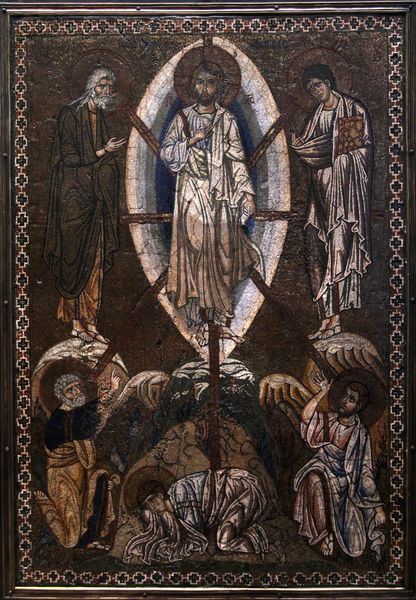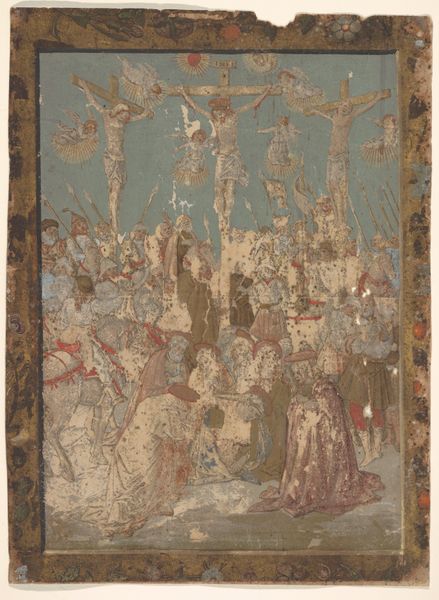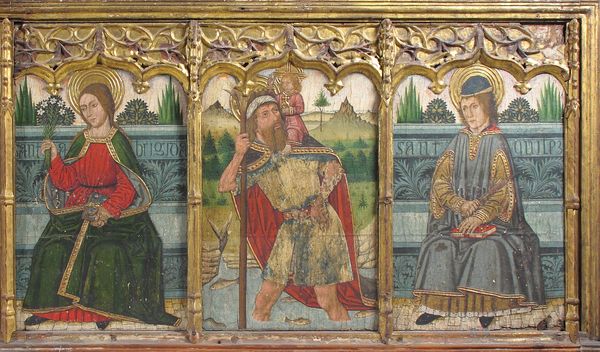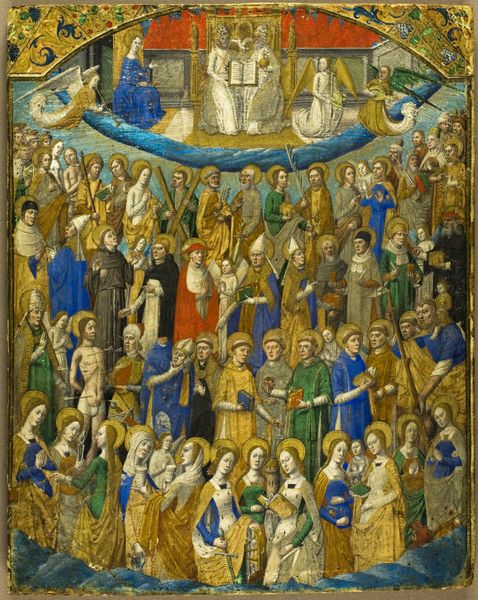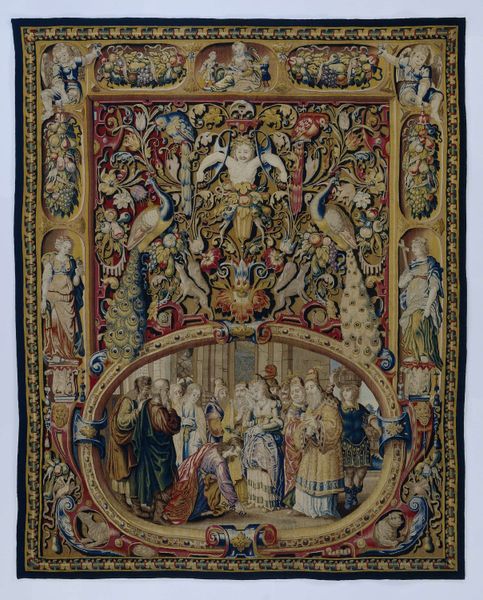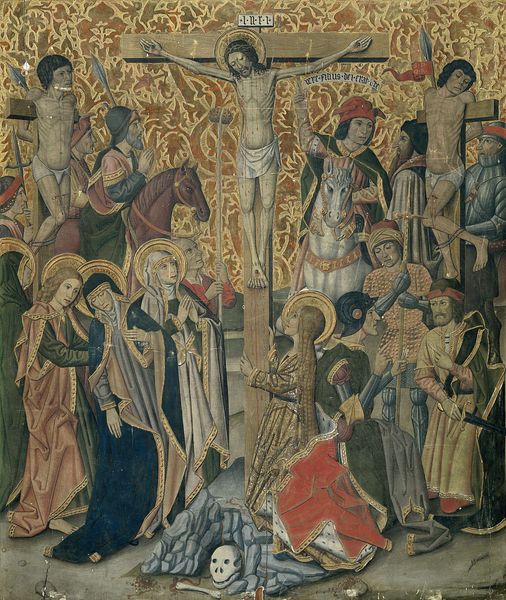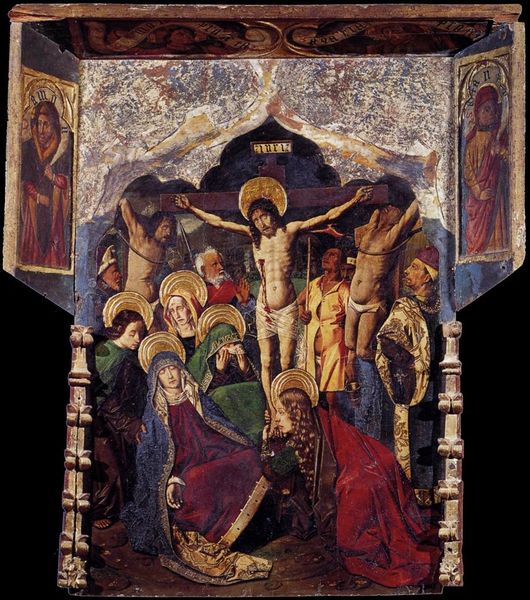
Triptych with The Way to Calvary, Crucifixion, and Descent from the Cross 16th century
0:00
0:00
tempera, painting
#
tempera
#
painting
#
figuration
#
oil painting
#
cross
#
history-painting
#
medieval-art
#
christ
Dimensions: Overall (with frame): 9 15/16 x 16 9/16 in. (25.2 x 42.1 cm) wings: 9 15/16 x 4 in. (25.2 x 10.2 cm) center panel: 9 15/16 x 8 7/16 in. (25.2 x 21.5 cm)
Copyright: Public Domain
Editor: This is a striking triptych by Jean Péicaud I from the 16th century, currently housed at the Metropolitan Museum of Art. It depicts "The Way to Calvary," "Crucifixion," and "Descent from the Cross" in three panels. I am really captivated by how all of the biblical narrative occurs simultaneously and wonder what meaning do the religious and cultural symbols imbue within this medieval scene? Curator: It's fascinating to observe how Pénicaud employs symbolism to distill the essence of Christian theology. Each panel, rich in historical narrative, presents more than just biblical events. Take, for instance, the central panel showcasing the Crucifixion: notice how Christ's figure, typically rendered with agony, possesses a serenity that alludes to sacrificial redemption. Does this serenity juxtapose the surrounding turmoil for you? Editor: Absolutely. There's a noticeable contrast between Christ's calmness and the surrounding chaos in all panels, as if His act is the key to resolving the world's disorder. What do you notice about how characters respond in each panel? Curator: Their grief, their bewilderment… It echoes humanity's complex grappling with faith, mortality, and divine purpose. And consider the recurrence of certain figures across the triptych, forming a continuum. The ever present cross! Each act is indelibly linked to the other. Can you appreciate this sense of unfolding? Editor: It seems like a conscious attempt to compress time, highlighting not just the historical sequence, but how those actions are spiritually intertwined. Each action affects and is part of each successive act, the cross follows through all events and brings me through. Curator: Precisely. And it’s through these symbols—the cross, the mourning figures, Christ's posture—that the cultural memory of salvation is vividly sustained. This continuity, visually represented, reinforced the importance of faith within their societal framework, ensuring its lessons were etched into their consciousness. What I take away is this need for the iconographic images to emotionally tether its observers, generation to generation. Editor: I can now understand how Pénicaud's work utilizes imagery to transcend mere depiction, serving as a constant source for psychological and historical introspection. I learned much about triptych and Christian historical meaning in art. Curator: Yes, it's through engaging with this artistic vernacular that we can grasp history, psychology and anthropology while illuminating continuity through potent cultural symbolism.
Comments
No comments
Be the first to comment and join the conversation on the ultimate creative platform.
